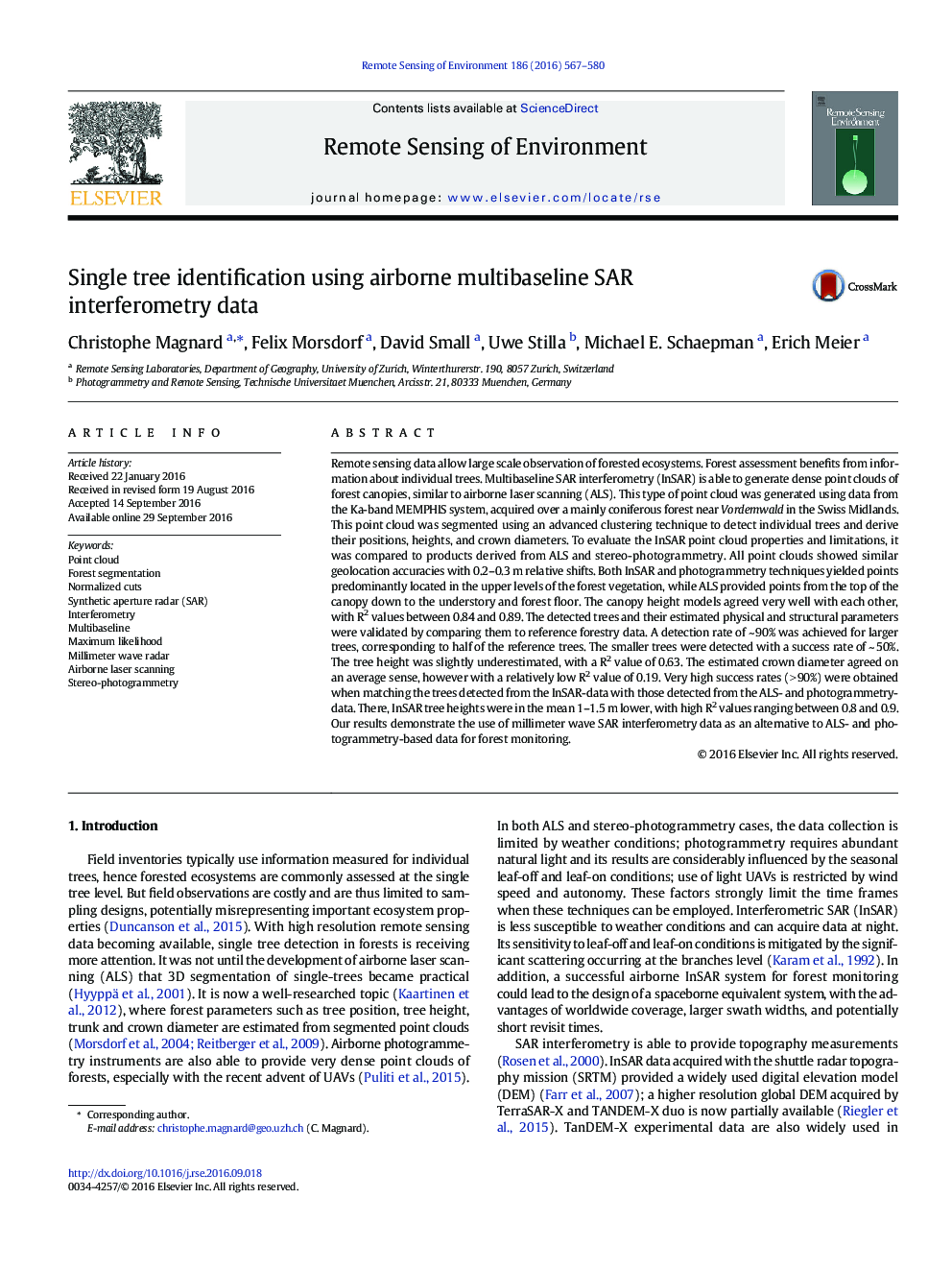| کد مقاله | کد نشریه | سال انتشار | مقاله انگلیسی | نسخه تمام متن |
|---|---|---|---|---|
| 6345116 | 1621214 | 2016 | 14 صفحه PDF | دانلود رایگان |

- Novel generation of a forest canopy point cloud using airborne multibaseline InSAR
- Point cloud segmentation to detect individual trees, derive biophysical parameters
- Validation using a field inventory, airborne laser scanning and photogrammetry data
- Most of the larger trees and half of the smaller trees were successfully detected.
- Tree positions and heights were reliably measured.
Remote sensing data allow large scale observation of forested ecosystems. Forest assessment benefits from information about individual trees. Multibaseline SAR interferometry (InSAR) is able to generate dense point clouds of forest canopies, similar to airborne laser scanning (ALS). This type of point cloud was generated using data from the Ka-band MEMPHIS system, acquired over a mainly coniferous forest near Vordemwald in the Swiss Midlands. This point cloud was segmented using an advanced clustering technique to detect individual trees and derive their positions, heights, and crown diameters. To evaluate the InSAR point cloud properties and limitations, it was compared to products derived from ALS and stereo-photogrammetry. All point clouds showed similar geolocation accuracies with 0.2-0.3Â m relative shifts. Both InSAR and photogrammetry techniques yielded points predominantly located in the upper levels of the forest vegetation, while ALS provided points from the top of the canopy down to the understory and forest floor. The canopy height models agreed very well with each other, with R2 values between 0.84 and 0.89. The detected trees and their estimated physical and structural parameters were validated by comparing them to reference forestry data. A detection rate of ~Â 90% was achieved for larger trees, corresponding to half of the reference trees. The smaller trees were detected with a success rate of ~Â 50%. The tree height was slightly underestimated, with a R2 value of 0.63. The estimated crown diameter agreed on an average sense, however with a relatively low R2 value of 0.19. Very high success rates (>Â 90%) were obtained when matching the trees detected from the InSAR-data with those detected from the ALS- and photogrammetry-data. There, InSAR tree heights were in the mean 1-1.5Â m lower, with high R2 values ranging between 0.8 and 0.9. Our results demonstrate the use of millimeter wave SAR interferometry data as an alternative to ALS- and photogrammetry-based data for forest monitoring.
Journal: Remote Sensing of Environment - Volume 186, 1 December 2016, Pages 567-580